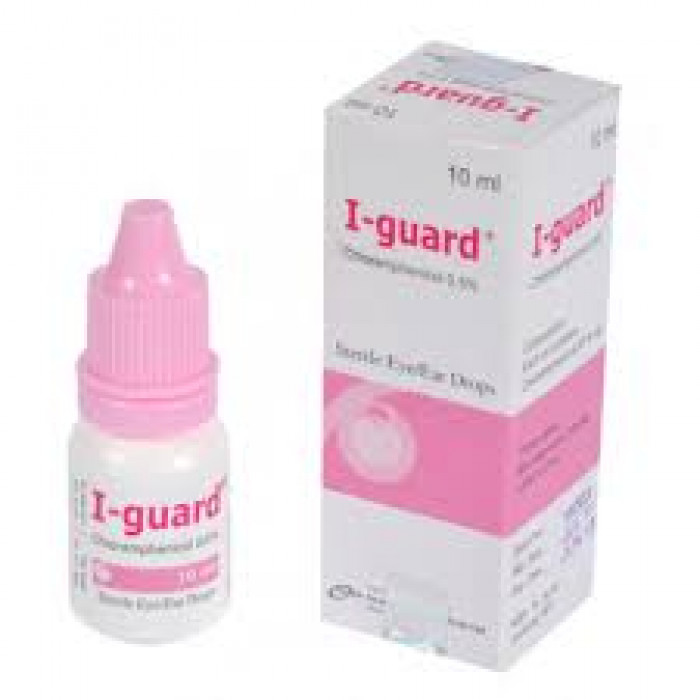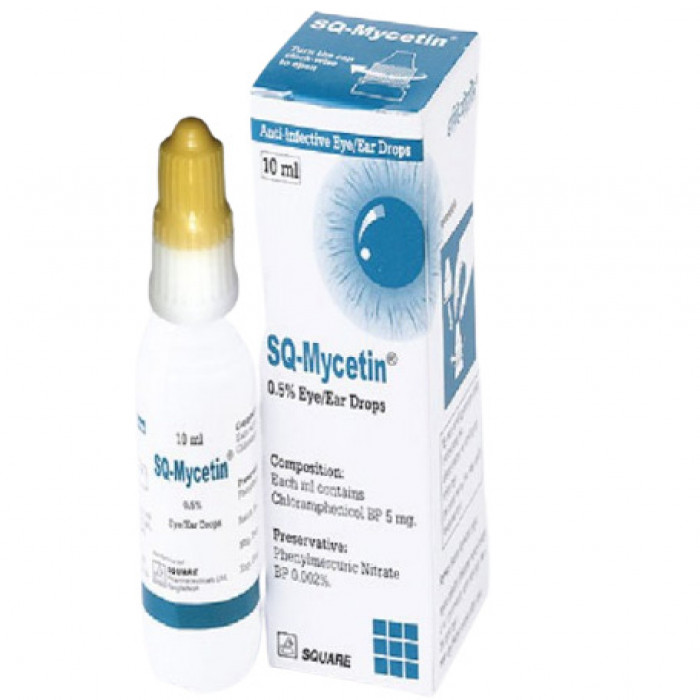
✔ 100% Authentic Product
👁️ Currently Viewing 2737
Opsophenicol 0.5% Drops is used for the treatment of Bacterial eye infections.
Discount
Price: ৳ 38
MRP:
৳
40
5%
Off

100% Genuine Products, Guaranteed

Safe & Secure Payments, Always

Fast, Secure & Efficient Delivery

Proper Packaging
 Cash on Delivery - All over Bangladesh
Cash on Delivery - All over Bangladesh Regular Delivery - 12-24 Hours, Dhaka City* Charge Tk.39-59
Regular Delivery - 12-24 Hours, Dhaka City* Charge Tk.39-59 Regular Delivery - 24-48 Hours, Other Cities* Charge Tk.99-110
Regular Delivery - 24-48 Hours, Other Cities* Charge Tk.99-110
 ফ্রি ডেলিভারিঃ - ৯৯৯ টাকা+ অর্ডারে, ঢাকা
শহরে
ফ্রি ডেলিভারিঃ - ৯৯৯ টাকা+ অর্ডারে, ঢাকা
শহরে ফ্রি ডেলিভারিঃ - ২৯৯৯ টাকা+ অর্ডারে, ঢাকার
বাহিরে
ফ্রি ডেলিভারিঃ - ২৯৯৯ টাকা+ অর্ডারে, ঢাকার
বাহিরে
100% Genuine Products, Guaranteed
Safe & Secure Payments, Always
Fast, Secure & Efficient Delivery
Proper Packaging
 Cash on Delivery - All over Bangladesh
Cash on Delivery - All over Bangladesh Regular Delivery - 12-24 Hours, Dhaka City* Charge Tk.39-59
Regular Delivery - 12-24 Hours, Dhaka City* Charge Tk.39-59 Regular Delivery - 24-48 Hours, Other Cities* Charge Tk.99-110
Regular Delivery - 24-48 Hours, Other Cities* Charge Tk.99-110 ফ্রি ডেলিভারিঃ - ৯৯৯ টাকা+ অর্ডারে, ঢাকা
শহরে
ফ্রি ডেলিভারিঃ - ৯৯৯ টাকা+ অর্ডারে, ঢাকা
শহরে ফ্রি ডেলিভারিঃ - ২৯৯৯ টাকা+ অর্ডারে, ঢাকার
বাহিরে
ফ্রি ডেলিভারিঃ - ২৯৯৯ টাকা+ অর্ডারে, ঢাকার
বাহিরে
✅ Description:
Chloramphenicol is an antibiotic that is commonly used to treat eye infections of the conjunctiva and/or cornea. It is effective against a variety of bacteria, including but not limited to chloramphenicol-resistant organisms. Some of the pathogens that chloramphenicol can target include Staphylococcus aureus, Streptococcus pneumoniae, Escherichia coli (E. coli), Haemophilus influenzae, Klebsiella/Enterobacter species, Moraxella lacunata, and Neisseria species.
By inhibiting bacterial protein synthesis, chloramphenicol works to kill or inhibit the growth of these bacteria, thereby treating eye infections. It is important to note that chloramphenicol should only be used as directed by a healthcare professional, and the full course of treatment should be completed to ensure the effective eradication of the infection.
If you have an eye infection or any concerns about your eye health, it is recommended to consult with a healthcare provider or an ophthalmologist for proper diagnosis and appropriate treatment options.
Safety Advices

Alcohol
CAUTION
There is no information available on the interaction of Opsophenicol 0.5% Drops with alcohol.

Pregnancy
CONSULT YOUR DOCTOR
Please consult your doctor before using Opsophenicol 0.5% Drops during pregnancy as there is limited information about the effects on pregnant women.

Breastfeeding
CONSULT YOUR DOCTOR
Please consult your doctor before using Opsophenicol 0.5% Drops while breastfeeding as there is limited safety information available.

Driving
CAUTION
You may experience visual disturbances like blurred vision after applying Opsophenicol 0.5% Drops. Therefore, you should avoid driving until your vision is clear.

Kidney
No interaction found/established

Liver
No interaction found/established
✔️ Uses of Opsophenicol 0.5% Drops
- Bacterial Eye Infections
✔️ How does Opsophenicol 0.5% Drops work?
Opsophenicol 1% Eye Drop belongs to an antibiotic that stops the growth of bacteria that cause eye infections. It does so by preventing the synthesis of essential proteins required by bacteria to carry out vital functions. This does not directly remove the bacteria but prevents them from increasing in numbers and eventually clears up the eye infection.
✔️ Side Effects of Opsophenicol 0.5% Drops
These are potential side effects and adverse reactions that may occur with the use of Opsophenicol 0.5% Drops. Please note that not all individuals may experience these effects, and the occurrence of side effects can vary from person to person. It is important to contact your doctor or seek medical attention immediately if you experience any of the following rare but serious symptoms:
- Wheeziness (shortness of breath), fever, swelling of your face, lips, tongue, throat, neck, itching, or rash with swelling of the skin: These could be signs of an allergic reaction, and immediate medical attention is required.
- Sore throat, bruising, or being unable to overcome an infection: These symptoms may indicate a decreased immune response or other underlying health issues, and it is important to consult your doctor.
- Changes in blood cells causing severe tiredness or easy bruising: Opsophenicol may affect blood cell production, and severe fatigue or easy bruising could be a sign of a blood-related problem. Medical advice should be sought in such cases.
- Eyesight problems: If you experience any changes in your vision or any visual disturbances while using Opsophenicol, it is important to inform your doctor.
- Tiredness, headaches, fever, severe chills, bleeding or bruising more easily than normal, nosebleeds: These symptoms could indicate a decrease in blood cell counts or other systemic reactions. Immediate medical attention is necessary.
- Drop in blood pressure: If you experience a sudden drop in blood pressure, characterized by dizziness, lightheadedness, or fainting, seek medical help promptly.
- Feeling generally weak and tired or another infection or easy bleeding or bruising: These symptoms may indicate systemic effects of the medication or other underlying health conditions. Consult your doctor if you experience these symptoms.
Remember, these side effects and adverse reactions are rare, but it is important to be aware of them and seek medical advice if needed. If you have any concerns about the medication or its side effects, it is always best to discuss them with your healthcare provider.
✔️ Quick Suggestions:
- Do not skip any doses and finish the full course of treatment even if you feel better.
- Do not touch the tip to any surface, or to your eye, to avoid contamination.
- Wait for at least 5-10 minutes before delivering the next medication in the same eye to avoid dilution.
- You should continue using the medicine for 48 hours after your symptoms have cleared up. However, do not use it for longer than five days without consulting your doctor.
- It may cause short-term blurring of vision when first used. Use caution before driving or using machines.
- Talk to your doctor if your symptoms haven't started to improve within two days of starting treatment if they get worse during treatment, or if you get another eye infection.
- Do not wear contact lenses until your infection clears up.
- Throw away any medicine left at the end of the 5-day course.
✔️ Indication of Opsophenicol 0.5% Drops
Opsophenicol 0.5% Drops are used to treat eye infections such as bacterial conjunctivitis, also known as pink eye. It is an eye infection that affects the conjunctiva (a clear tissue that covers the white part of your eyeball and lines the eyelid).
✔️ Pharmacology
Chloramphenicol inhibits bacterial protein synthesis by specifically binding to the 50S subunit of the bacterial ribosome. This binding prevents the formation of peptide bonds by inhibiting the peptidyl transferase activity of the ribosome. As a result, the growth and reproduction of susceptible bacteria are impaired.
Chloramphenicol has both bacteriostatic and bactericidal actions, depending on the concentration of the drug and the specific bacterial species being targeted. At lower concentrations, it exhibits bacteriostatic effects, meaning it inhibits bacterial growth and reproduction. At higher concentrations, it can display bactericidal effects, directly killing the bacteria.
Chloramphenicol is effective against certain bacteria, including Haemophilus influenzae, Neisseria meningitidis, and Streptococcus pneumoniae, which are commonly associated with respiratory tract infections and other conditions. However, it is important to note that the susceptibility of bacteria to chloramphenicol can vary, and resistance to the drug can develop over time. Therefore, proper diagnosis and susceptibility testing should be conducted to ensure the appropriate use of chloramphenicol in treating bacterial infections.
It is also worth mentioning that chloramphenicol is typically used as a second-line or alternative treatment option due to the potential risk of serious side effects associated with its use. As with any medication, it is important to follow the prescribed dosage and duration of treatment as directed by a healthcare professional.
✔️ Dosage & Administration of Opsophenicol 0.5% Drops
- It is for ophthalmic use only.
- Check the label for directions before use.
- Instill 1 or 2 drops in the conjunctival sac 4-6 times per day for the first 72 hours and then every 4 hours thereafter.
- Treatment should be continued for approximately 7 days, but should not be continued for more than 3 weeks without re-evaluation by the physician.
- Always use the Opsophenicol 0.5% Drops as prescribed by the doctor.
✔️ Interaction
You should always tell the doctor if you are taking any other medicines,
- Methotrexate (used to treat cancer)
- Azathioprine (used for the immune system)
- Chymotrypsin (used as a dietary supplement)
Inform your physician if you are taking, herbal preparation and supplements to avoid any interaction.
Opsophenicol 0.5% Drops should not be used concomitantly with medicines like azathioprine or if you are on chemotherapy.
If you use another eye product concomitantly with Opsophenicol 0.5% Drops, keep a minimum gap of 5 to 10 minutes between the application of both medicines.
✔️ Contraindications
Chloramphenicol should not be used in individuals with a history of hypersensitivity or toxic reactions to the drug. Allergic reactions to chloramphenicol can range from mild skin rashes to severe anaphylaxis, a life-threatening allergic reaction.
Additionally, chloramphenicol should not be used to treat herpes simplex and other viral conditions of the eye or ear. This is because chloramphenicol is an antibiotic that specifically targets bacterial infections, and it is not effective against viral infections.
Furthermore, chloramphenicol should not be used to treat mycosis, which refers to fungal infections. Chloramphenicol is not active against fungi and is not an appropriate treatment for these types of infections. Antifungal medications are typically used to treat fungal infections.
✔️ Pregnancy & Lactation
The safety of using Opsophenicol 0.5% Drops during pregnancy and breastfeeding has not been established through extensive studies. Therefore, it should only be used during pregnancy or breastfeeding if the potential benefits outweigh the potential risks, and under the guidance and recommendation of a healthcare professional. It is important to consult with your doctor before using any medication during pregnancy or while breastfeeding to ensure the best course of action for you and your baby.
✔️ Precautions & Warnings
It is important to avoid prolonged use of chloramphenicol ophthalmic solution. This is because long-term use of chloramphenicol can increase the risk of developing blood dyscrasias, which are abnormalities in the blood cells such as granulocytopenia (reduced granulocytes), thrombocytopenia (reduced platelets), and mild anemia. These blood dyscrasias can have serious consequences and it is important to discontinue the use of chloramphenicol immediately if any signs or symptoms of hypersensitivity or blood dyscrasias occur.
Chloramphenicol ophthalmic solution should only be used for the treatment of moderate to severe eye infections caused by susceptible bacteria. It should not be used for mild infections or as a preventive measure. It is important to follow the prescribed treatment regimen and avoid unnecessary or prolonged use of the medication.
If you experience any local hypersensitivity reactions or if your symptoms worsen or persist despite treatment, it is important to consult with your healthcare provider for further evaluation and appropriate management.
✔️ Storage Conditions
- Store Opsophenicol 0.5% Drops at room temperature in a clean and dry place.
- Keep the medicine away from children and pets.
- You must not use the Opsophenicol 0.5% Drops once the expiry date has passed and discard it properly.
- You need to discard the medicine 4 weeks from first opening it.
⚠️Disclaimer:
At ePharma, we’re committed to providing accurate and accessible health information. However, all content is intended for informational purposes only and should not replace medical advice from a qualified physician. Please consult your healthcare provider for personalized guidance. We aim to support, not substitute, the doctor-patient relationship.










